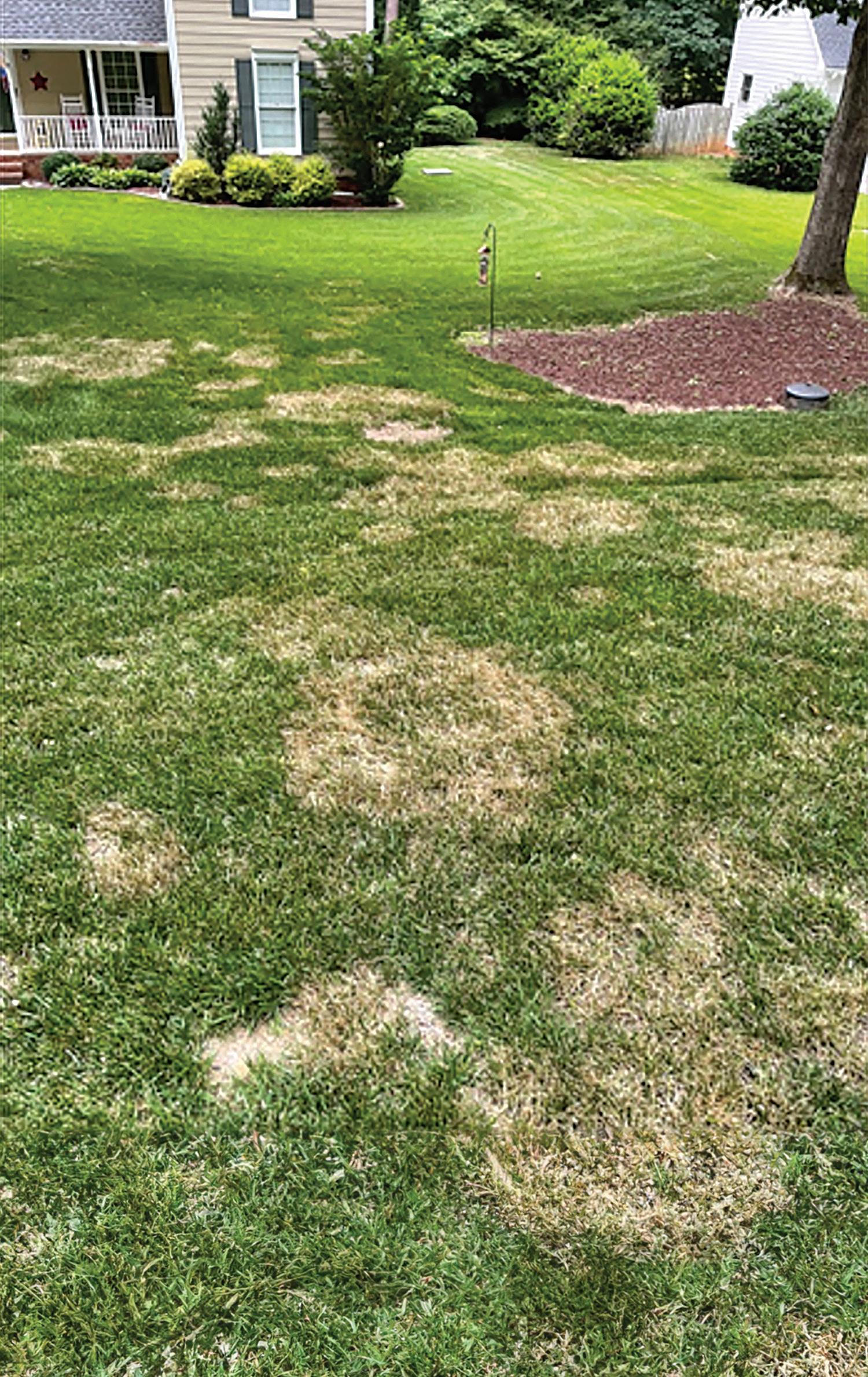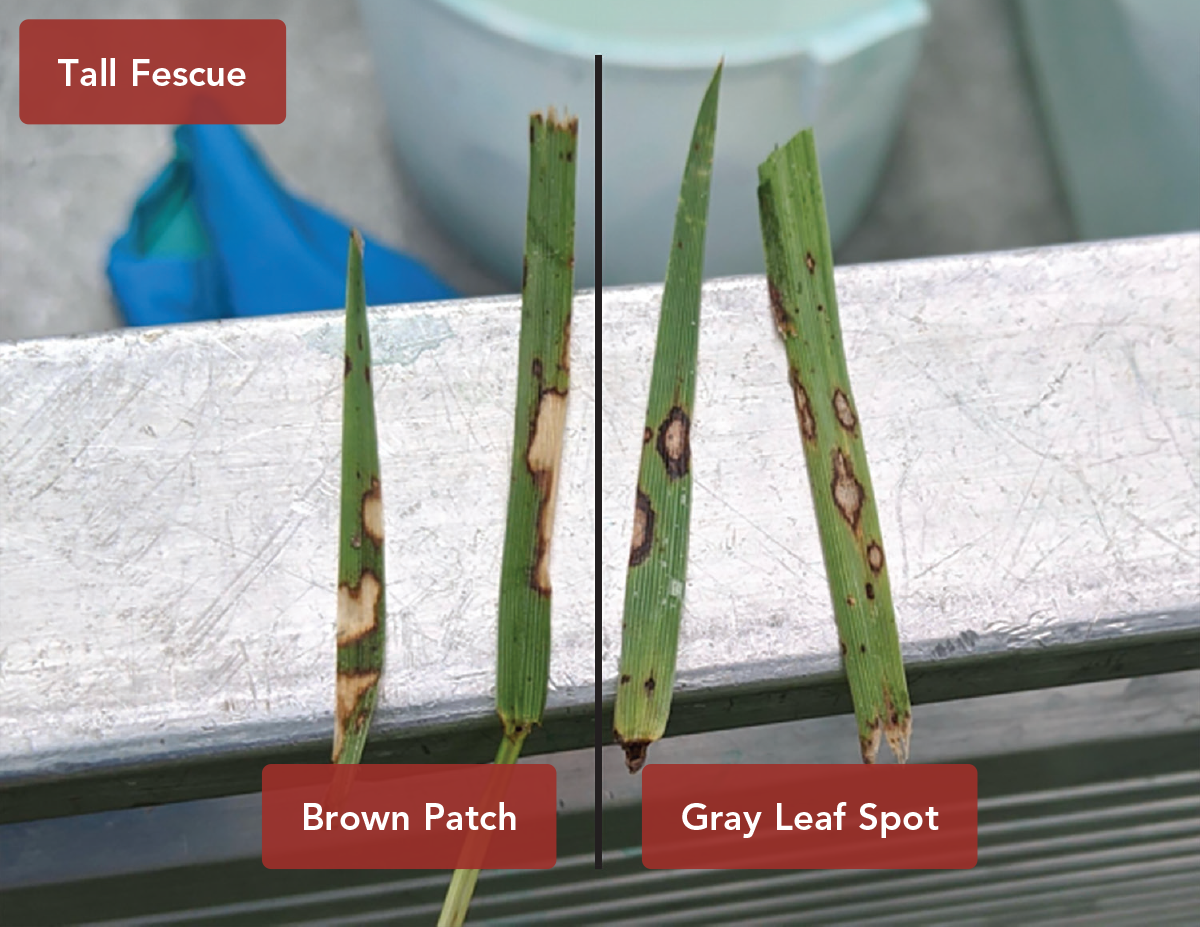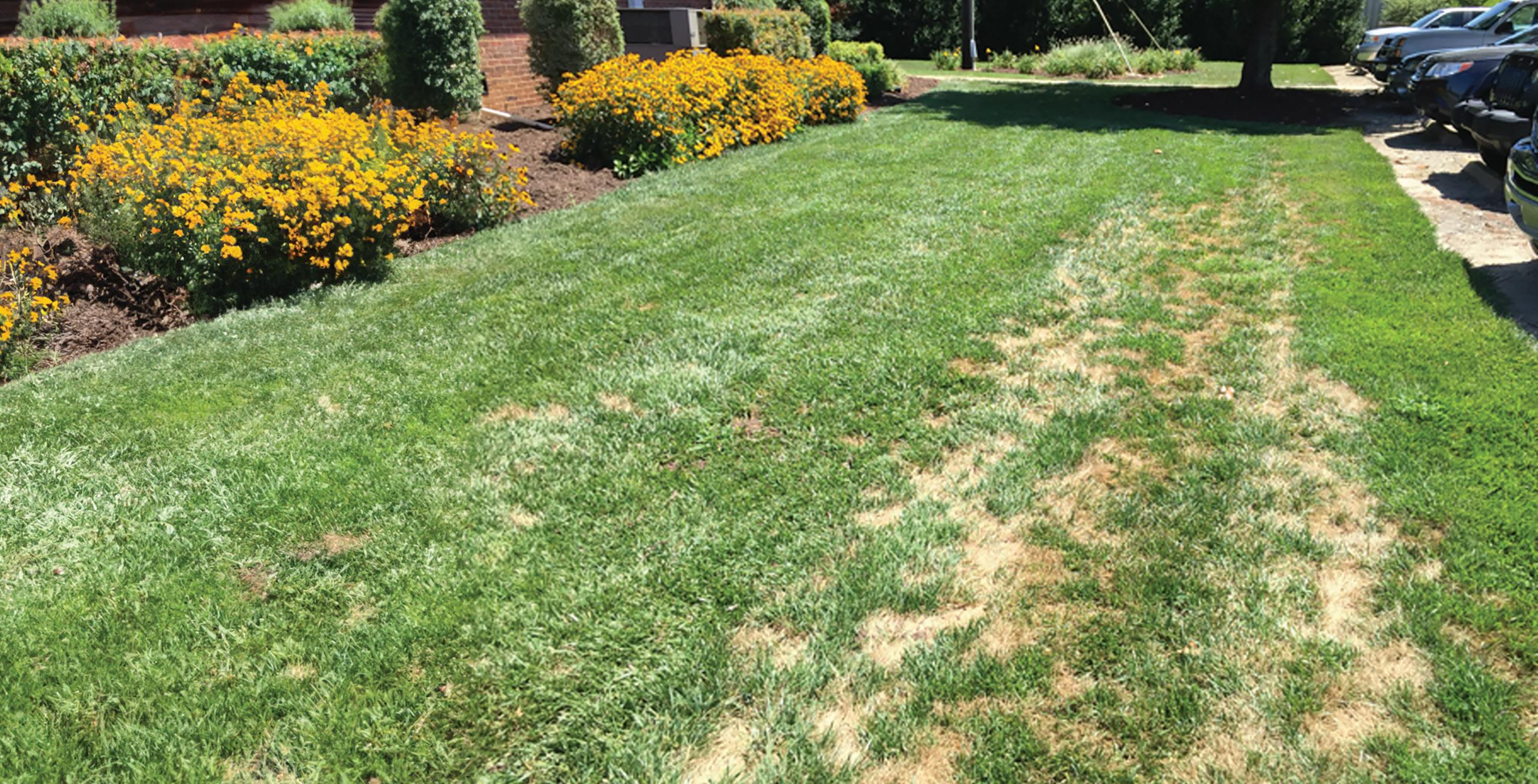
7 minute read
Feature
Management Considerations for the Most Common Diseases of Tall Fescue in NC
By Jim Kerns, Ph.D., Daniel Freund, and Lee Butler Department of Entomology and Plant Pathology NC State University
Introduction
Tall fescue is a popular cool-season grass species valued for its resilience and adaptability in various climates. It is the most widely grown cool-season grass in NC because of its tolerance to heat, drought, and some diseases. Tall fescue is a bunch-type grass, which means it does not recover when the turf thins from abiotic or biotic stress. Therefore, if this happens it will require re-seeding each year. Although tall fescue is resistant to some fungal diseases, it can be quite susceptible to three different fungi that cause brown patch, gray leaf spot, and Pythium blight. Understanding these diseases and implementing effective management strategies is crucial for maintaining lush, green lawns. This article will cover the most important aspects of managing these diseases and include a disease to be on the lookout for.
Brown Patch
Brown patch, caused by fungal pathogens in the genus Rhizocotonia and related genera, is a prevalent disease in tall fescue lawns, particularly during warm and humid weather conditions. It is the most common and problematic disease each summer on tall fescue swards.

Symptoms
The symptoms of brown patch vary according to mowing height. In landscape situations, where mowing height is greater than one inch, brown patch appears as roughly circular patches that are brown, tan, or yellow in color and range from six inches to several feet in diameter. The affected leaves typically remain upright, and lesions are evident on the leaves that are tan in color and irregular in shape with a dark brown border. When the leaves are wet or humidity is high, small amounts of gray cottony growth, called mycelium, may be seen growing amongst affected leaves.

Factors Favoring Brown Patch Development
Brown patch is most severe during extended periods of hot, humid weather. The disease can begin to develop when night temperatures exceed 60°F but is most severe when low and high temperatures are above 70°F and 90°F, respectively. The turfgrass leaves must be continuously wet for 10 to 12 hours for the brown patch fungus to infect. Poor soil drainage, lack of air movement, shade, cloudy weather, dew, overwatering, and watering in late afternoon favor prolonged leaf wetness and increased disease severity. The disease is most severe on tall fescue swards that are not actively growing. So, over-regulation or under-fertilization could also enhance brown patch severity. This is slightly different from conventional knowledge because for many, many years brown patch was thought to be more severe when plants were fertilized during the summer months. However, this is not supported by current research with the newer turf-type tall fescue cultivars. It is okay to fertilize in the summer months on tall fescue as long as the nitrogen rate does not exceed 0.5 lbs/1,000 ft2.
Management
1. Proper Lawn Maintenance
Maintain adequate soil drainage and avoid overwatering to reduce humidity levels that favor fungal growth. Reducing leaf wetness is an excellent strategy for reducing brown patch severity. Current research demonstrates that the use of soil surfactants can reduce the severity of brown patch and should be considered.
2. Mowing Practices
Regularly mow tall fescue at the appropriate height (3 ½ to 4 ½ inches) to promote air circulation and minimize moisture retention.
3. Fungicide Applications
Many fungicides are effective. For more information, please see:
www.turffiles.ncsu.edu/diseasesin-turf/brown-patch-in-turf/
Gray Leaf Spot
Gray leaf spot, caused by the fungal pathogen Pyricularia grisea, is another common disease affecting tall fescue. It appears as small, irregularly shaped lesions with gray centers and dark borders on the grass blades. Gray leaf spot initially appears as spots on the leaves that are round or oval, tan in color, and have a dark brown border. When the leaves are wet or humidity is high, the leaf spots turn gray and fuzzy with profuse spore production. In time, the leaf spots expand and girdle the leaf, causing it to die back from the tip. Significant damage to the turf stand may occur as the disease continues to progress. In tall fescue and perennial ryegrass, foliar blighting initially occurs in patches from 4 to 12 inches in diameter that are orange to yellow. Like the leaf spots, these patches rapidly coalesce to produce large, irregular areas of damaged turf. The leaves of tall fescue and perennial ryegrass blighted by gray leaf spot are typically matted and greasy in appearance. Because of this symptom, gray leaf spot is often confused with Pythium blight in tall fescue and perennial ryegrass.

Development Factors
Gray leaf spot is most severe in newly established turfgrass stands. However, can be devesting in mature stands as well if conditions are conducive. As our climate has moderated, the fungus is now able to overwinter here in NC, so the inoculum does not have to be blown in like in more Northern states. The disease can develop when temperatures are between 70 and 95o F as long as 12 to 14 hours of leaf wetness occurs. Recently, the disease seems to proliferate when nighttime temperatures are consistently above 73o F as when this typically happens in NC there is sufficient leaf wetness for infection to begin. Other factors that make gray leaf spot especially severe are extended rainfall events, improper irrigation timing, and infrequent mowing events. Lush leaf tissue is particularly susceptible to infection by the gray leaf spot pathogen.

Management
1. Proper Irrigation
Water deeply and infrequently to prevent surface moisture buildup, which can facilitate fungal proliferation.
2. Fertilization
Avoid excessive nitrogen fertilization during late summer and early fall (July through September), as it can promote succulent growth and increase susceptibility to gray leaf spot.
3. Mowing Practices
Regularly mow tall fescue at the appropriate height to promote air circulation and minimize moisture retention.
4. Fungicide Treatments
There are a few effective fungicides but typically DMIs and thiophanate methyl are options in lawn care to control gray leaf spot. Unfortunately, many effective fungicides are not labeled for home lawn use. For more information see here:
www.turffiles.ncsu.edu/diseasesin-turf/gray-leaf-spot-in-turf/
Pythium Blight:
Pythium blight, caused by various Pythium species, is a destructive disease that thrives in waterlogged soils and high temperatures. It manifests as rapidly expanding, watersoaked patches of slimy, dark green grass that wilt and die. Pythium blight can spread quickly during periods of warm, wet weather, posing a significant threat to tall fescue lawns. Yet, the occurrence of this disease is relatively limited compared to brown patch and gray leaf spot. It is important to stress that for Pythium blight to develop, extremely wet soils are required! Many in the field think that gray leaf spot is Pythium blight, so be sure to get an accurate diagnosis.





